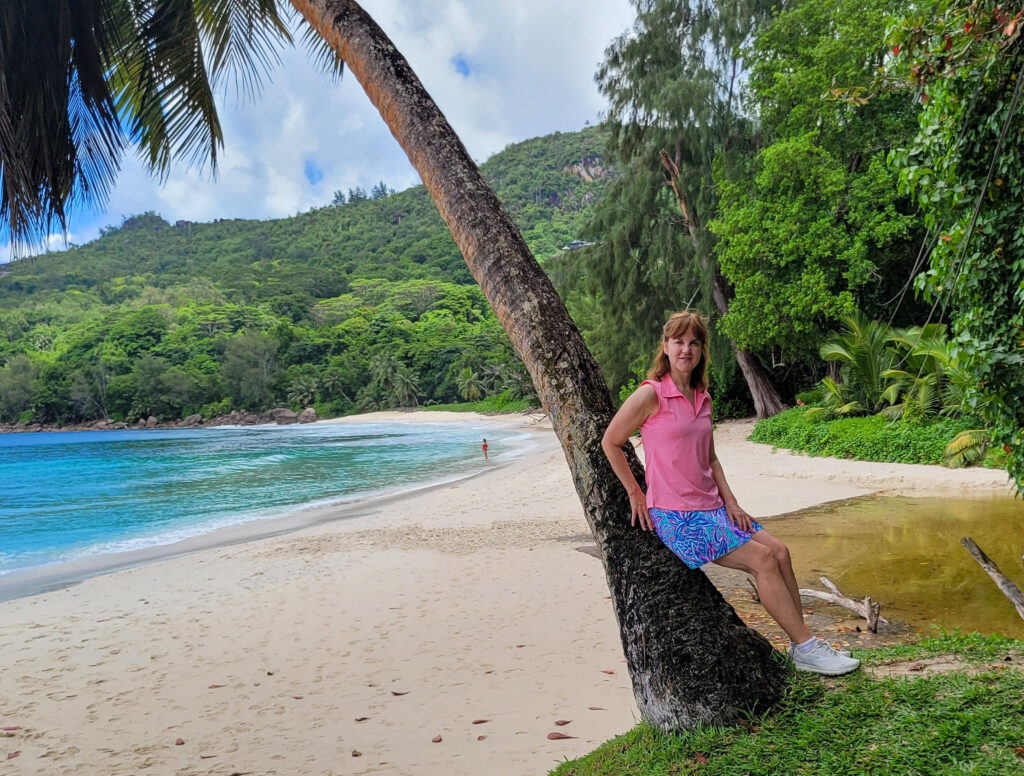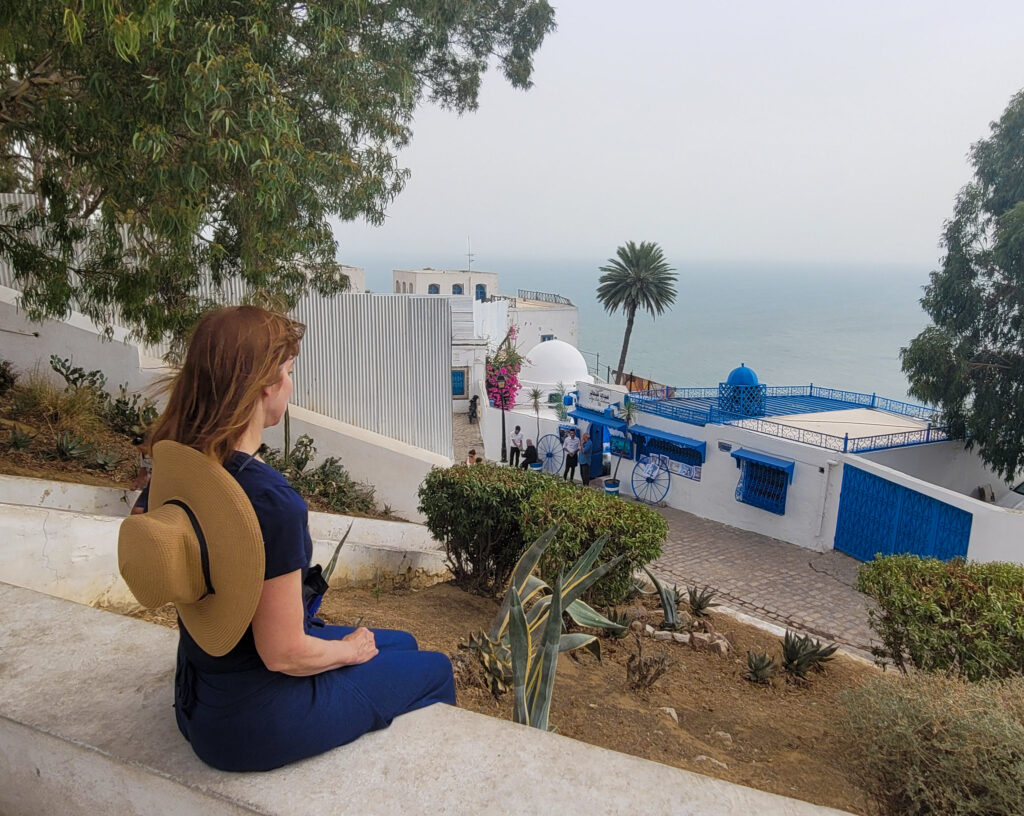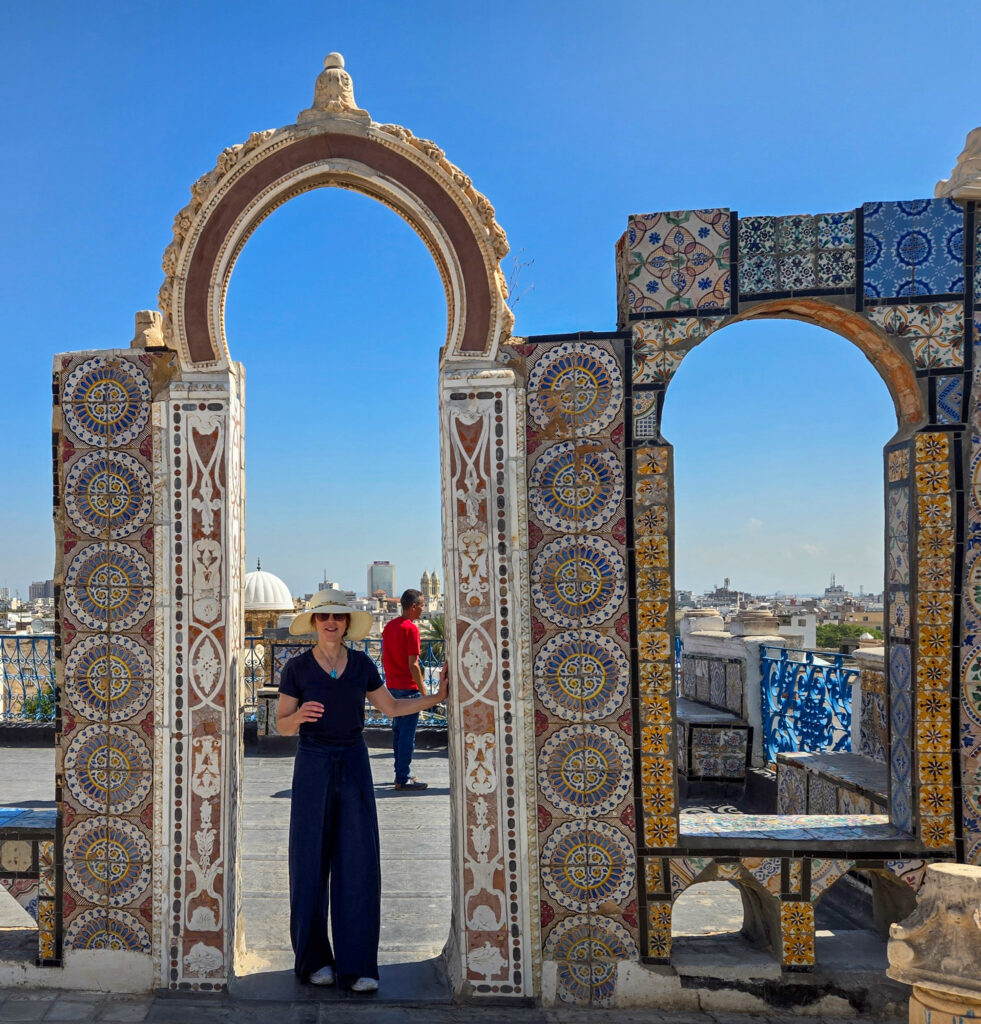About Tunisia
I loved my time spent in the Tunis area and love sharing my Tunisia Travel Guides below. Tunisia is the northernmost country in Africa on Cape Angela along the Mediterranean Sea. The Tunisian population is mostly Arab and Muslim. The language is Tunisian Arabic and the currency is the Tunisian Dinar. The capital and largest city is Tunis, near the port La Goulette.
Many different cultures and civilizations inhabited Tunisia. Originally, the indigenous Berbers lived there and later the Phoenicians arrived in 12th century BC. The Phoenicians created Carthage by 7th century BC. Ancient Carthage was a powerful merchant empire and military rival to Rome. Rome defeated the Phoenicians in 146 BC and occupied Carthage for 800 years.
Arab Muslims conquered all of Tunisia in 697. Later, the Ottoman Empire occupied Tunisia for 300 years until 1881 when the French conquered Tunisia. In 1956 Tunisia declared independence as the Tunisian Republic. Overall, Tunisia’s culture is an exotic blend of Northern African, Middle Eastern and Mediterranean influences. Tunisia is one of the few countries in Africa ranking high on the Human Development Index. It also has one of the highest per capita incomes on the continent.
Many top tourist attractions in Tunisia are near the capital city, Tunis.
Carthage archeological site is home to some of the best Roman ruins in the world. The Bardo National Museum in Tunis houses many of the Roman mosaics from Carthage and is the largest mosaic museum in the world. The medina of Tunis is one of the most ancient medinas in the world, dating back to 700. It offers a wide diversity of souks selling textiles, perfumes, herbs, spices, teas and clothing. Sidi Bou Said is called the “Santorini of Tunisia,” beautifully painted in mostly blue and white.
Tunisia Travel Guides
The Grand Africa Cruise Itinerary & Highlights
One of the most epic journeys of my life was circumnavigating Africa. In 2023, I…
Fascinating Tunisia 2-Day Itinerary – Carthage, Sidi Bou Said, Tunis Medina & Bardo Museum
The country Tunisia is a treasure trove of archeology, art, Mediterranean vistas and eloquent architecture. …
Incredible Medina of Tunis Highlights Tour and Bardo Museum in One Day
Tunis is a treasure, filled with exotic influences from the Middle East, Northern Africa and…




